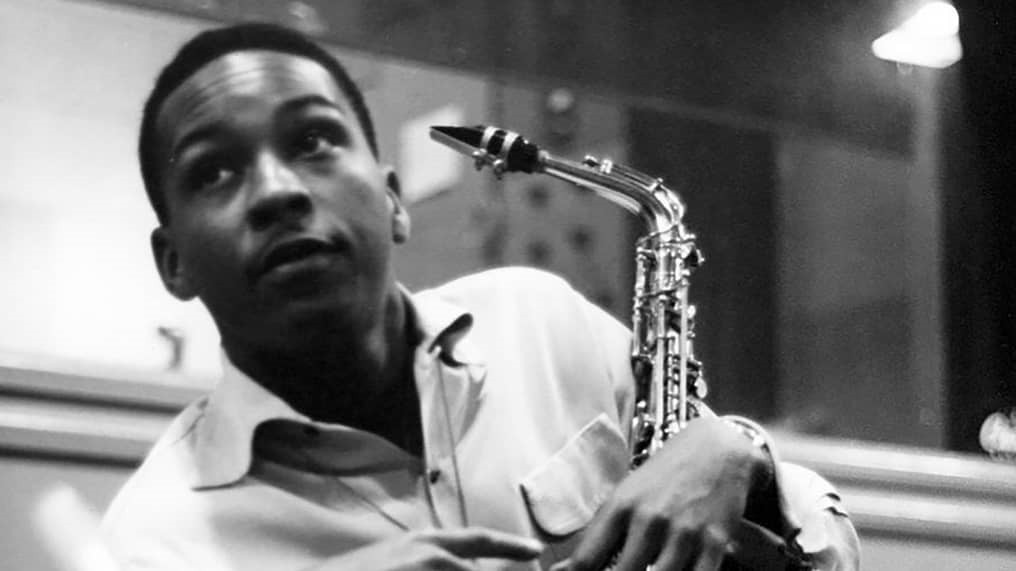Frank Morgan was also a heroin addict, convict, thief, burglar, bank robber and check forger who also dabbled in larceny, had multiple wives and disappointed many, many people along the way. He went 30 years between record appearances, largely because he was in and out of prison during those decades, including San Quentin. But he always carried a certain demeanor about him.
“I worked hard,” Morgan says in the film, “at being a respectable junkie.”
In 2014’s Sound of Redemption: The Frank Morgan Story, director N.C. Heiken tells the saxman’s saga via archival footage and contemporary interviews with friends, family, fellow musicians, jazz critics and Morgan himself.
At the June 10 Houston premiere, as part of the MFAH’s annual month-long “Jazz on Film” series, the screening will be followed by a Q&A session with series curator Peter Lucas and Morgan’s half-sister, Houston resident Angela Morgan, who also appears in the film. A concert featuring handpicked musicians playing Morgan's music will follow from 10 p.m. to midnight at a nearby venue.
“I am just so proud of who he was and that his story is being told,” Angela says today.“I worked hard at being a respectable junkie.” — Saxophonist Frank Morgan in 'Sound of Redemption,' screening June 10 at MFAH
tweet this
The doc’s framing device is a 2012 tribute concert to Morgan held within the same walls of San Quentin State Prison, where he served a lot of time. An audience of convicts watches a group of Morgan's contemporaries and acolytes play music associated with him, while stories of his life are told.
When Angela is reminded of a shot of her in the end credits after the concert, showing her wiping tears from her eyes, she says that remembering that night “gives me chills” to think about even now.
“It took a year to get clearance for me to be allowed to enter the prison,” she says. “Some of the prisoners were also in tears, and some of them knew Frank when he was there and were holding up record covers. I felt that Frank was in the room.”
Frank Morgan’s life didn’t start off in the best of circumstances. His mother was only 15 when she had him. His father was Stanley Morgan, guitarist with the famous Ink Spots vocal group and something of a roving ladies’ man. Frank was born out of Stanley’s fourth marriage, Angela his eighth (and final). Little sister feels that the film shows just how intertwined the personal and the professional was for Frank.
“I am a big jazz buff and it may be personal, but when you hear Frank play and after watching his life story, it comes through in his music,” Angela says. “And people love his music, but when they know the story behind it, they will hear it differently.”
Young Frank was mostly raised by his grandmother and took to the
An entire book could be written about
When Parker died from the results of long and rampant drug abuse, the news actually reached Morgan and the band he was playing with while they were onstage at a gig. And how did they commemorate the fact? By all shooting up smack in a back alley behind the club during intermission.
“I think my brother, even though he was a heroin addict, what I remember most is that he had certain disciplines like he didn’t drink at all. And he was a Muslim, very devoted to his religion,” Angela says. She tells of an incident the night before Stanley’s funeral in a hotel room when a family member accidentally sat on a copy of the Koran that was on a bed, and Frank grew enraged.
“He just went into a frenzy, and yelled, ‘You don’t put your behind on the Koran! What are you doing?’” she recalls. “He had certain disciplines in his life, and they were non-negotiable, no matter [what else] was going on with him.”
Morgan made by playing or stole to support what at one point the film says was a $1,500-a-day heroin habit – which, he took a point of pride in saying, he was making enough money to cover.
Drugs and other criminal activities kept Morgan incarcerated during what should have been his most productive years. But some of them detailed here defy expectation – as when he would dress up in a three-piece suit and confidently walk into a bank vault area and stuff money in his pockets, no one questioning him.
He would do the same thing at another branch, but this time dressed as a janitor. “A black man with a mop and a pail could get into Fort Knox, especially with a little gray in his hair,” Frank said.

Frank Morgan circa 1990, with prison and his drug problems (mostly) behind him and a second chance at success.
Courtesy of the Museum of Fine Arts, Houston
Angela Morgan was just a toddler when Frank was in the revolving door of
She also remembers that Stanley was Frank’s “biggest cheerleader” and bragged to everyone he could about his son’s brilliant playing, no matter if he was sleeping that night as free citizen Frank Morgan or San Quentin inmate #A71037.
“I remember bits and pieces of him coming in and out. I knew he was great, and that he was famous, but I didn’t know why he came and went,” she remembers.
Ultimately, Sound of Redemption will fill a lot of gaps in the story of Frank Morgan for those who know his music. Angela Morgan is more excited that it will serve as a first introduction to the man for many audience members.
“Often, we hear about musicians who we love and they disappear from the scene, you don’t really what happened. But this will explain


